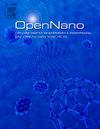A water-soluble, organosilane-based coating blocked acute and sub-chronic respirable crystalline silica-induced lung toxicity and systemic inflammation in an animal model
Q2 Pharmacology, Toxicology and Pharmaceutics
引用次数: 0
Abstract
Inhalation of respirable crystalline silica can cause pulmonary fibrosis and inflammation. Silica particles have a highly reactive surface that generates cell-damaging reactive oxygen species when fractured. The objective was to evaluate lung toxicity after exposure to silica coated with and without a water-soluble, organosilane-based coating (SIVO160). Male Sprague-Dawley rats were intratracheally instilled with silica (1 mg/rat), silica coated with SIVO160, SIVO160 alone, or saline (vehicle control). At 3, 10, 45, and 90 d after exposure, bronchoalveolar lavage (BAL) and histopathology were performed to assess lung toxicity. Whole blood was collected to evaluate systemic inflammation by differentiating circulating white blood cells. Also, samples of uncoated and coated silica were analyzed [(1) RapiFlex MALDI-ToF/ToF mass spectrometry; (2) digestion in phagolysosomal simulant fluid (PSF) and serum ultrafiltrate (SUF)] to confirm the SIVO160 coating on the surface of the silica particles after incubation in biological media. At each time point, silica significantly increased BAL fluid lactate dehydrogenase (lung injury) and the number of recovered lung macrophages and neutrophils (lung inflammation). These silica-induced elevations in lung toxicity were completely blocked at each time point when silica was coated with SIVO160 before exposure. At 45 d after exposure to uncoated silica, circulating total white blood cells, neutrophils, and lymphocytes were significantly elevated in the blood compared to the other groups. Lung exposure to silica pretreated with SIVO160 did not cause a significant elevation in any of the peripheral blood cell types at any time point when compared to the saline and SIVO160 alone. As assessed by mass spectrometry, multiple unique spectral peaks were detected on the surface of the silica+SIVO160 particle samples after an overnight incubation in saline. The peaks were absent in the uncoated silica sample spectra, confirming the coating’s presence on the particles. The time it took for removal by digestion of the SIVO160 coating on the silica was reflected by a short-term delay after incubation in both PSF and SUF, suggesting protection could be conveyed to lung cells by the coating during phagocytosis and particle deposition on lung tissue structures. Organosilane materials may be used as a possible mitigation strategy to potentially protect large numbers of workers exposed to respirable crystalline silica in multiple industries is important.
一种水溶性有机硅基涂层在动物模型中阻断急性和亚慢性可呼吸性结晶硅诱导的肺毒性和全身炎症
吸入可吸入的结晶二氧化硅可引起肺纤维化和炎症。二氧化硅颗粒具有高度活性的表面,当破裂时产生破坏细胞的活性氧。目的是评估暴露于有或没有水溶性有机硅基涂层(SIVO160)的二氧化硅后的肺毒性。雄性Sprague-Dawley大鼠气管内灌注二氧化硅(1 mg/只)、二氧化硅包被SIVO160、单独SIVO160或生理盐水(对照)。暴露后3、10、45和90 d,进行支气管肺泡灌洗(BAL)和组织病理学评估肺毒性。采集全血,通过区分循环白细胞来评估全身性炎症。(1) RapiFlex MALDI-ToF/ToF质谱分析;(2)在吞噬溶酶体模拟液(PSF)和血清超滤液(SUF)中进行消化,以确认生物培养基孵育后二氧化硅颗粒表面的SIVO160涂层。在每个时间点,二氧化硅显著增加BAL液乳酸脱氢酶(肺损伤)和恢复的肺巨噬细胞和中性粒细胞(肺炎症)的数量。当暴露前用SIVO160包覆二氧化硅时,这些二氧化硅引起的肺毒性升高在每个时间点都被完全阻断。暴露于未涂覆二氧化硅45天后,与其他组相比,血液中循环的白细胞总数、中性粒细胞和淋巴细胞显著升高。与单独使用生理盐水和SIVO160相比,肺暴露于经SIVO160预处理的二氧化硅在任何时间点都没有引起任何外周血细胞类型的显著升高。通过质谱分析,在生理盐水中孵育过夜后,二氧化硅+SIVO160颗粒样品表面检测到多个独特的光谱峰。在未涂覆的二氧化硅样品光谱中没有峰,证实了涂层在颗粒上的存在。在PSF和SUF中孵育后,SIVO160涂层通过消化去除二氧化硅所需的时间被反映为短期延迟,这表明在肺组织结构的吞噬和颗粒沉积过程中,涂层可以传递给肺细胞保护作用。有机硅烷材料可作为一种可能的缓解策略,以潜在地保护多个行业中暴露于可吸入结晶二氧化硅的大量工人,这一点很重要。
本文章由计算机程序翻译,如有差异,请以英文原文为准。
求助全文
约1分钟内获得全文
求助全文
来源期刊

OpenNano
Medicine-Pharmacology (medical)
CiteScore
4.10
自引率
0.00%
发文量
63
审稿时长
50 days
期刊介绍:
OpenNano is an internationally peer-reviewed and open access journal publishing high-quality review articles and original research papers on the burgeoning area of nanopharmaceutics and nanosized delivery systems for drugs, genes, and imaging agents. The Journal publishes basic, translational and clinical research as well as methodological papers and aims to bring together chemists, biochemists, cell biologists, material scientists, pharmaceutical scientists, pharmacologists, clinicians and all others working in this exciting and challenging area.
 求助内容:
求助内容: 应助结果提醒方式:
应助结果提醒方式:


